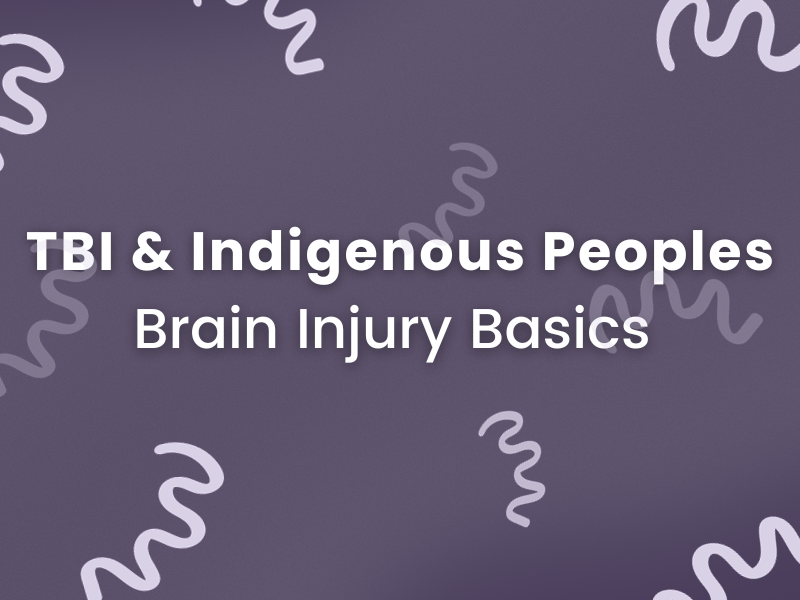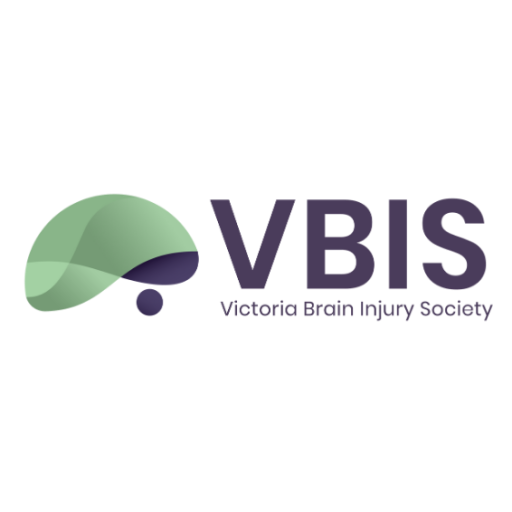When examining the intersection of TBI and Indigenous peoples in Canada, it is important to consider various factors that influence this complex issue.
This fifth segment is written and researched by Kamal Narayana, a graduate neuroscientist student in the Division of Medical Sciences at the University of Victoria.
We acknowledge and respect the Lək̓ʷəŋən (Songhees and Esquimalt) Peoples on whose territory the university and Victoria Brain Injury Society stands, and the Lək̓ʷəŋən and WSÁNEĆ Peoples whose historical relationships with the land continue to this day.
The incidence of traumatic brain injury differs among populations, and this is evident in the Indigenous communities in Canada. Accounting for approximately 5% of Canada’s population (1.6 million), Indigenous communities are disproportionately affected by TBI. These groups are three times more likely to be hospitalized as a result of brain injury compared to the rest of Canada, and experience higher prevalence of asthma, diabetes, obesity, and tuberculosis than the general population. Socioeconomic determinants affecting health disparities are rooted in the historical injustices experienced by Indigenous peoples in Canada. The discovery of unmarked graves at former residential schools in 2021 has shed light on these injustices and their enduring multigenerational effects on Indigenous communities.

Traumatic brain injury (TBI) is a significant health concern among Canada’s Indigenous peoples, including First Nations, Inuit, and Métis communities. TBI refers to damage to the brain caused by a sudden trauma or blow to the head, and it can result in a wide range of physical, cognitive, emotional, and social challenges. And although TBI risk in indigenous people has been identified, very few studies discuss this topic and the determinants that may place them at higher risk of TBI.
The aim of this post is to illuminate the social factors that could impact indigenous communities, with a significant emphasis on steering future research endeavors and raising awareness about the impact of Traumatic Brain Injuries (TBIs) on diverse populations.
When examining the intersection of TBI and Indigenous peoples in Canada, it is important to consider various factors that influence this complex issue.
Historical and Cultural Context:
Canada has a history of colonization, forced assimilation, and systemic discrimination against Indigenous peoples, which has had profound and lasting effects on their health and well-being. These historical injustices have contributed to social and economic disparities that, in turn, can influence the incidence and consequences of TBIs within Indigenous communities.
Higher Risk Factors:
Several factors contribute to a higher risk of TBIs among Indigenous peoples in Canada:
1. Socioeconomic Factors: Many Indigenous communities in Canada face economic challenges, inadequate housing, limited access to education, and high unemployment rates, which can increase the risk of accidents and injuries, including TBIs.
2. Remote and Isolated Communities: Some Indigenous communities are located in remote and isolated regions, making access to healthcare services, including specialized TBI care, difficult. Delayed or limited access to medical treatment and rehabilitation can exacerbate TBI outcomes.
3. Substance Abuse: Substance abuse, including alcohol and drug misuse, is a concern in some Indigenous communities and can lead to an increased risk of injuries, including TBIs.
Cultural Factors:
Cultural factors play a significant role in how Indigenous people experience and respond to TBIs. Traditional healing practices, cultural beliefs, and stigma surrounding mental health issues can influence decisions about seeking medical care and support for TBI survivors. Cultural competency and respect for Indigenous traditions are crucial in providing appropriate care and support.
Healthcare Disparities:
There are disparities in healthcare access and quality for Indigenous peoples in Canada. Cultural insensitivity, limited access to specialized TBI care, and geographic barriers can hinder timely diagnosis, treatment, and rehabilitation for TBI survivors.
Community Resilience:
Despite the challenges, many Indigenous communities have strong social networks and support systems. These communities often draw upon their cultural traditions and values to support TBI survivors and their families. Community-based programs and initiatives are essential in addressing TBI-related challenges.
Prevention and Education:
Efforts to prevent TBIs within Indigenous communities often focus on education and awareness programs. These initiatives aim to promote safety, injury prevention, and early recognition of TBI symptoms.
The present post provides factors contributing to TBI in indigenous population as well as potential strategies to address this health issue. However, it is equally important to understand these issues in order to appropriately improve the health of indigenous populations in Canada and across the world. Therefore, two major themes are addressed that explain the disparities observed within the social and healthcare system.
1 – Inadequate Resources Available
Insufficient resources within indigenous communities can jeopardize safety and contribute to the occurrence of TBI. For instance, subpar housing conditions and unsafe workplaces can lead to falls and subsequent injuries. In remote communities, inadequate road infrastructure and harsh winter conditions result in higher usage of all-terrain vehicles and snowmobiles, which heightens the risk of neurotrauma including TBI in case of accidents. Additionally, the limited availability of shelter or safe houses for women increases their vulnerability to TBIs resulting from intimate partner violence.
Furthermore, due to the rural locations of many indigenous communities, acute and rehabilitation services for TBI are located hundreds or even thousands of kilometers away. The scarcity of transportation options for these communities makes accessing these services particularly challenging. The literature also describes a wide range of resource deficits, including disparities in internet bandwidth that create barriers to using telemedicine, limited access to sports medicine resources for concussion management, inadequate infrastructure for wheelchair patients on reserves, and insufficient indigenous services within the healthcare system.
2- Challenges within the HealthCare System
Challenges within the Canadian healthcare system also add to the burden of TBI. After a traumatic injury, the care provided to indigenous populations can differ significantly from that offered to the general Canadian population. For example, a recent study in the Canadian Journal of Surgery revealed that indigenous individuals with Traumatic Spinal Cord Injuries (TSCIs) experienced a longer period from hospital admission to discharge (104.0 days vs. 34.0 days), despite being younger and having fewer underlying health conditions compared to non-indigenous patients. In another study published in the Journal of Brain Injury in 1999, it was observed that indigenous patients with TBI received less post-discharge support, participated in fewer family conferences, and were more likely to undergo surgery.
Additionally, indigenous individuals report experiencing stigmatization and encountering obstacles when seeking patient-centered care within a healthcare system originally designed without sufficient consideration for their culture and language. These barriers encompass a shortage of translators, limited integration of traditional healing practices with Western medicine, and historical injustices that contribute to a lack of trust in the medical community. Moreover, after receiving acute and rehabilitation care, disputes between provincial and federal governments over jurisdiction can result in delayed access to services such as wheelchair accommodations in patients’ homes.
Strategies to Address TBI in Indigenous Populations in Canada
In order to tackle the various factors contributing to the challenges of neurotrauma in indigenous communities of Canada, the present post has proposed several systemic modifications.
These encompass enhancing formal assistance for indigenous individuals within the healthcare system, including services like interpreters, modifying service delivery models to integrate traditional healing methods with guidance from elders, and placing greater emphasis on pre-discharge planning and post-discharge support, particularly for indigenous populations residing in remote areas with limited resources.
The following strategies that were not mentioned are addressed below:
- Addressing the impact of alcohol and safe-drug use through inclusive community programs.
- Increasing education and awareness of brain injury, particularly in intimate partner violence.
- Improving access to brain injury using telemedicine.
- Additional funding for programs to improve access to timely medical transportation, high-quality neurological care, training in cultural competency for healthcare providers, and traditional healing services.
- Research involving collaboration with Indigenous leaders to understand the needs of their communities and the social determinants of health contributing to TBI burden.
- Improving road and home safety, as well as increasing access to safety devices.
In summary, traumatic brain injury is a complex issue within Canada’s Indigenous communities, shaped by historical, cultural, social, and economic factors. Addressing the impact of TBIs on Indigenous peoples requires culturally sensitive approaches, collaboration between healthcare providers and community leaders, and efforts to reduce health disparities and improve access to care and support services
More efforts are needed to implement measures aimed at diminishing the impact of TBI and neurotrauma-related injuries in indigenous populations in Canada and globally. This presents a significant public health concern and a valuable opportunity to make a meaningful difference.
References:
Indigenous group of people. Statistics Canada: https://www23.statcan.gc.ca/imdb/p3Var.pl?Function=DECI&Id=1324435
Traumatic brain injury and intimate partner violence: addressing knowledge and service gaps among indigenous populations in Canada: https://www.cambridge.org/core/journals/brain-impairment/article/traumatic-brain-injury-and-intimate-partner-violence-addressing-knowledge-and-service-gaps-among-indigenous-populations-in-canada/8AADF110C8DCBC13BE4217F08F303263
The impact of fatal pediatric trauma on aboriginal children: https://www.sciencedirect.com/science/article/pii/S0022346813001139
Social Determinants of Traumatic Brain Injury in the North American Indigenous Population: A Review: https://www.cambridge.org/core/journals/canadian-journal-of-neurological-sciences/article/social-determinants-of-traumatic-brain-injury-in-the-north-american-indigenous-population-a-review/8E2E804FBFB1DC69255DB61A926938C5
Traumatic spinal cord injuries among aboriginal and non-aboriginal populations of Saskatchewan: a prospective outcomes study: https://www.canjsurg.ca/content/63/3/E315
A comparison of traumatic brain injury in the Saskatchewan native North American and non-native North American populations: https://www.tandfonline.com/doi/abs/10.1080/026990599121359
Using thematic analysis in psychology: https://www.tandfonline.com/doi/abs/10.1191/1478088706QP063OA
Scoping studies: towards a methodological framework: https://www.tandfonline.com/doi/full/10.1080/1364557032000119616
Cerebral palsy in Canadian Indigenous children: https://onlinelibrary.wiley.com/doi/full/10.1111/dmcn.14776
Evaluation of a pilot paediatric concussion telemedicine programme for northern communities in Manitoba: https://www.tandfonline.com/doi/full/10.1080/22423982.2019.1573163


